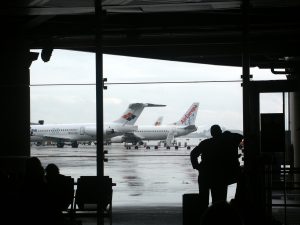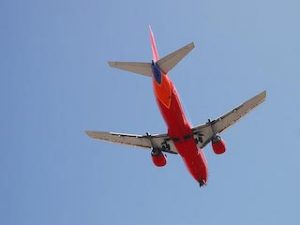Airport Is The Heart Of Global Travel
 Airports are key hubs in the global transportation network. They serve as the starting point for countless journeys and connect people from all over the world. Every day, millions of travelers pass through these facilities. Airports are complex infrastructures designed to facilitate the safe and efficient movement of passengers and cargo.
Airports are key hubs in the global transportation network. They serve as the starting point for countless journeys and connect people from all over the world. Every day, millions of travelers pass through these facilities. Airports are complex infrastructures designed to facilitate the safe and efficient movement of passengers and cargo.
Functions of an airport
The primary function of an airport is to provide a location for aircraft to land and take off. Airports also serve as terminals for passenger check-in, security checks, baggage handling, and customs processes. These operations are crucial for ensuring smooth travel experiences. Airport management ensures that both ground and air services run without delays. This includes coordinating air traffic control, managing boarding procedures, and keeping up with weather conditions.
Types of airports
There are several types of airports, each catering to specific needs. Commercial airports accommodate large passenger planes. These airports usually have multiple terminals to manage the flow of travelers. Regional airports handle smaller aircraft, offering shorter flights between nearby cities. Cargo airports focus on the movement of goods and freight. These airports often operate around the clock, facilitating international trade. Private airports, on the other hand, serve private jets and chartered flights.
Airport facilities and services
Modern airports are equipped with various facilities to serve passengers. These include lounges, duty-free shops, restaurants, and free Wi-Fi. Some airports even have spas, gyms, and sleeping pods. Many large airports feature shopping malls, making them more like city centers than transit points. Additional services like currency exchange, lost and found, and baggage wrapping contribute to passenger convenience. The goal is to enhance the passenger experience, making travel more enjoyable and stress-free.
Security measures at airports
Security is one of the most important aspects of airport operations. Airports use advanced screening technology to ensure the safety of passengers and staff. Passengers are required to pass through metal detectors, and their belongings are scanned by x-ray machines. These measures help detect any prohibited items or security threats. Security personnel are trained to handle potential issues, keeping airports secure for everyone.
Air traffic control and operations
Air traffic control is vital in managing the flow of aircraft in and out of an airport. Air traffic controllers ensure that planes take off and land at scheduled times without interference. They also communicate with pilots to provide weather updates and instructions. These controllers play an essential part in preventing accidents and maintaining order within busy airspaces. Without them, airport operations would not be able to function smoothly.
Runways and taxiways
Runways are critical infrastructure for any airport. These long, flat surfaces allow aircraft to take off and land. The design of runways is crucial to accommodate different types of planes, as each aircraft requires specific runway lengths and surfaces. Taxiways are the routes aircraft take between the runway and terminals. These pathways must be wide and well-marked to ensure safe movements on the ground. Airports need to manage both runways and taxiways carefully to prevent accidents.
Passenger processing at airports
Passenger processing is a highly coordinated system in airports. Check-in counters allow travelers to confirm their flight details and receive boarding passes. Security checks follow to ensure passengers and their belongings are free of threats. Afterward, passengers can wait in lounges until it’s time to board. Upon landing, passengers must clear customs and immigration before exiting the airport. This entire process can take time, but it is designed to ensure both safety and efficiency.
Economic impact of airports
Airports contribute significantly to the global economy. They are not only centers of tourism and business but also major employers. Thousands of workers are employed in airport operations, from security staff to baggage handlers. Airports generate substantial revenue from ticket sales, cargo operations, retail shops, and other services. These facilities also support surrounding industries, such as hotels, transportation, and restaurants.
Technological innovations in airports
Advances in technology have dramatically transformed the airport experience. Automated check-in kiosks, biometric security systems, and self-boarding gates have streamlined many processes. These innovations help reduce wait times and improve the overall efficiency of airports. Technology also plays a vital role in air traffic management, where radar systems and satellite navigation ensure safe flight paths. As technology continues to evolve, airports will only become more advanced and user-friendly.
Airports and environmental impact
Airports can have a significant environmental impact. Aircraft fuel consumption, noise pollution, and waste management are just a few of the challenges airports face. Many airports are working to reduce their carbon footprints by implementing sustainable practices. This includes using renewable energy sources, reducing water usage, and investing in green buildings. Airports are also exploring alternative fuels for planes to reduce emissions and lessen their environmental impact.
International airports vs. domestic airports
International airports handle flights that travel between different countries. These airports are equipped with customs and immigration facilities to process international passengers. Domestic airports only handle flights within the same country. While they share many similarities with international airports, domestic airports typically have fewer security and customs processes. Both types of airports are crucial for connecting cities and countries, but they differ in the scope of services provided.
Airport design and architecture
The design of an airport plays a significant role in its functionality. Architects work to create efficient layouts that facilitate the smooth flow of passengers and aircraft. Terminals are designed to provide easy access to check-in counters, security checks, and boarding gates. The use of natural light, spacious lobbies, and clear signage enhances the travel experience. The design also ensures that airports can accommodate large numbers of travellers at once.
Airport staffing and operations
Airports require a diverse range of staff to keep operations running smoothly. These include security personnel, ground crew, flight attendants, air traffic controllers, and customer service representatives. Each employee plays a vital role in ensuring the safety and satisfaction of passengers. Collaboration between different teams helps ensure that passengers can move through the airport with ease, and flights depart on time.
Future of airports
The future of airports is set to be shaped by several key trends. Innovations in automation and artificial intelligence will likely make air travel even more seamless. Airports are exploring the possibility of driverless vehicles for baggage handling and passenger transport. Additionally, augmented reality (AR) could soon be used to guide travelers through airports, offering real-time directions and updates.
Influence of airports on travel trends
Airports significantly influence global travel trends. As more people travel internationally, the demand for airport services continues to rise. Airports are adapting to this increase by expanding their facilities and services. This includes offering more flights, improving amenities, and enhancing security protocols. The global network of airports helps boost tourism, commerce, and cultural exchange by making travel more accessible.
Role of airports in air cargo
Airports are central to the movement of air cargo. They are key nodes in the logistics networks that support international trade. Cargo terminals handle goods ranging from electronics to perishable food items. Airports are designed with specific facilities for loading and unloading freight efficiently. This service is vital for industries that rely on fast and reliable transportation of goods across borders.
Airports and accessibility
Accessibility in airports has become a major focus. Many airports have implemented features to assist travelers with disabilities. These include ramps, elevators, and specialized seating in waiting areas. In addition, airports now offer services like priority boarding and help with navigating terminals. These changes ensure that air travel is accessible to all passengers, regardless of mobility challenges.
Security innovations in modern airports
Modern airports continue to innovate security measures to enhance passenger safety. Advanced body scanners are now used to detect potential threats without causing delays. Biometric identification, such as facial recognition, is becoming more widespread. These technologies speed up the check-in and boarding process while ensuring that security protocols are met. By adopting the latest in security tech, airports are reducing the risk of incidents and improving efficiency.
Connecting the world through airports
Airports play a pivotal role in connecting people across the globe. They facilitate travel, promote cultural exchange, and support international business. The infrastructure and services available at airports are constantly evolving to meet the demands of modern travel. Airports will continue to be the backbone of global connectivity, making the world a smaller place for all.
A world of opportunities in aviation and travel
The aviation industry is a gateway to countless opportunities. Airports are central to a rapidly growing sector that touches almost every part of life. The rise of low-cost airlines, improved passenger services, and expanded international routes means more people can travel farther and more often. As airports continue to evolve, they will continue to offer new experiences and open up opportunities for all.










